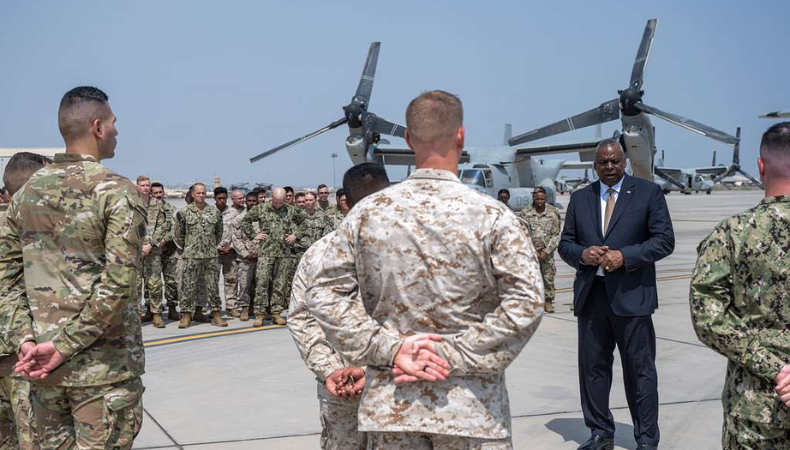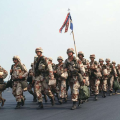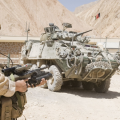U.S. Defense Secretary Announces Strategic Military Adjustments in the Middle East

Following the last strike in Iran that claimed the life of Hamas leader Ismail Haniyeh, U.S. Defense Secretary Lloyd Austin revealed on Friday notable changes to military posture in the Middle East. The Pentagon’s strategic recalibration consists in the deployment of more fighter planes and the ongoing presence of an aircraft carrier in the area, so supporting the U.S. dedication to preserve stability within growing tensions.
Improved Military Profile
The Pentagon went into great length outlining its strategies to increase Middle Eastern military capability. The area will be covered by a fighter jet squadron, therefore improving aerial combat capability. Additionally scheduled to replace the USS THEODORE ROOSEVELT Carrier Strike Group is the USS ABRAHAM LINCOLN Carrier Strike Group, therefore guaranteeing continuous naval power within the Central Command area of responsibility. This calculated action is meant to keep a strong carrier strike group presence, which is very important for operations in regional security.
Backing Israel and Strengthening defenses
Ordering the deployment of more ballistic missile defense-capable cruisers and destroyers to the area, President Biden is honoring a pledge to Israeli Prime Minister Benjamin Netanyahu. This augmentation seeks to bolster defenses and reassure friends of the United States of constant assistance. The increased military presence—including the USS WASP Amphibious Ready Group/Marine Expeditionary Unit (ARG/MEU) functioning in the Eastern Mediterranean—emphasizes the whole spectrum of capability the United States keeps in the Middle East.
Notable High-profile Deaths recently
Expanding U.S. military defenses as a result of the murder of Hamas leader Ismail Haniyeh in Tehran by a covert bomb device. Senior Hezbollah commander Fouad Shukur’s death in Beirut preceded this occurrence. These deliberate assassinations have greatly raised tensions in the area, hence the U.S. military must react strategically to maintain regional peace and stability.
Keep On Reading
Emphasize de-escalation and diplomacy
The U.S. is still dedicated to de-escalating tensions and seeking diplomatic answers notwithstanding the increased military deployment. The publication of the Pentagon underlined the continuous negotiations for a ceasefire as part of a larger plan to guarantee the release of hostages and bring the war in Gaza to an end. Seeking to restore security and peace to the unstable area, the United States keeps juggling military readiness with diplomatic actions.
Unknown Implementation
Although the Pentagon’s announcement reveals notable military improvements, it is yet unknown where precisely the USS ABRAHAM LINCOLN Carrier Strike Group and the new fighter aircraft squadron will be deployed in the Middle East. This strategic ambiguity emphasizes the fluid character of military operations and the need of adaptability in reacting to changing threats and geopolitical factors.
Result
Recent changes to American military posture in the Middle East show a multifarious approach meant to strengthen defenses, assist friends, and seek diplomatic answers. The American stays alert and ready to modify its military and diplomatic strategies to guarantee regional peace and security as the scenario keeps changing.









